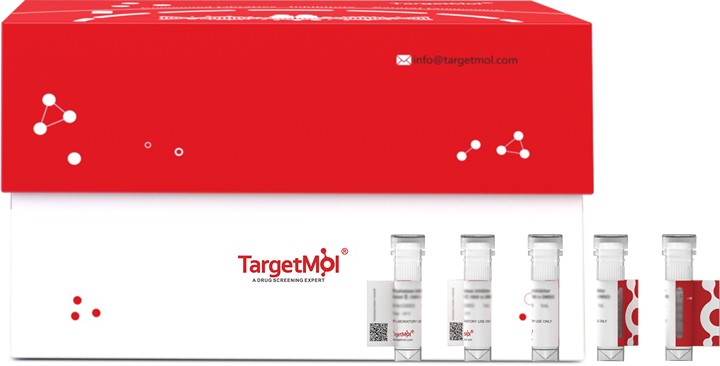- Remove All
 Your shopping cart is currently empty
Your shopping cart is currently empty
SHP-1 Protein, Mouse, Recombinant (aa 207-597, His & GST)
PTPN6 is an enzyme that belongs to the protein tyrosine phosphatase (PTP) family. PTPs are signaling molecules that regulate a variety of cellular processes including cell growth, differentiation, mitotic cycle, and oncogenic transformation. N-terminal part of PTPN6 contains two tandem Src homolog (SH2) domains, which act as protein phospho-tyrosine binding domains, and mediate the interaction of PTPN6 with its substrates. PTPN6 is expressed primarily in hematopoietic cells, and functions as an important regulator of multiple signaling pathways in hematopoietic cells. It has been shown that PTPN6 interacts with, and dephosphorylate a wide spectrum of phospho-proteins involved in hematopoietic cell signaling.

SHP-1 Protein, Mouse, Recombinant (aa 207-597, His & GST)
| Pack Size | Price | Availability | Quantity |
|---|---|---|---|
| 100 μg | $700 | In Stock |
Product Information
| Biological Activity | Activity testing is in progress. It is theoretically active, but we cannot guarantee it. If you require protein activity, we recommend choosing the eukaryotic expression version first. |
| Description | PTPN6 is an enzyme that belongs to the protein tyrosine phosphatase (PTP) family. PTPs are signaling molecules that regulate a variety of cellular processes including cell growth, differentiation, mitotic cycle, and oncogenic transformation. N-terminal part of PTPN6 contains two tandem Src homolog (SH2) domains, which act as protein phospho-tyrosine binding domains, and mediate the interaction of PTPN6 with its substrates. PTPN6 is expressed primarily in hematopoietic cells, and functions as an important regulator of multiple signaling pathways in hematopoietic cells. It has been shown that PTPN6 interacts with, and dephosphorylate a wide spectrum of phospho-proteins involved in hematopoietic cell signaling. |
| Species | Mouse |
| Expression System | Baculovirus Insect Cells |
| Tag | His, GST |
| Accession Number | P29351-2 |
| Synonyms | SH-PTP1,SHP-1,PTPTY-42,Ptp1C,protein tyrosine phosphatase, non-receptor type 6,me,Hcph,hcp,70Z-SHP |
| Construction | A DNA sequence encoding the mouse PTPN6 (P29351-2) (Ala207-Lys597) was fused with the N-terminal polyhistidine-tagged GST tag at the N-terminus. Predicted N terminal: Met |
| Protein Purity | > 85 % as determined by SDS-PAGE |
| Molecular Weight | 72.7 kDa (predicted); 63 kDa (reducing conditions) |
| Endotoxin | < 1.0 EU/μg of the protein as determined by the LAL method. |
| Formulation | Lyophilized from a solution filtered through a 0.22 μm filter, containing 20 mM Tris, 500 mM NaCl, pH 7.0, 10% glycerol. Typically, a mixture containing 5% to 8% trehalose, mannitol, and 0.01% Tween 80 is incorporated as a protective agent before lyophilization. |
| Reconstitution | A Certificate of Analysis (CoA) containing reconstitution instructions is included with the products. Please refer to the CoA for detailed information. |
| Stability & Storage | It is recommended to store recombinant proteins at -20°C to -80°C for future use. Lyophilized powders can be stably stored for over 12 months, while liquid products can be stored for 6-12 months at -80°C. For reconstituted protein solutions, the solution can be stored at -20°C to -80°C for at least 3 months. Please avoid multiple freeze-thaw cycles and store products in aliquots. |
| Shipping | In general, Lyophilized powders are shipping with blue ice. |
| Research Background | PTPN6 is an enzyme that belongs to the protein tyrosine phosphatase (PTP) family. PTPs are signaling molecules that regulate a variety of cellular processes including cell growth, differentiation, mitotic cycle, and oncogenic transformation. N-terminal part of PTPN6 contains two tandem Src homolog (SH2) domains, which act as protein phospho-tyrosine binding domains, and mediate the interaction of PTPN6 with its substrates. PTPN6 is expressed primarily in hematopoietic cells, and functions as an important regulator of multiple signaling pathways in hematopoietic cells. It has been shown that PTPN6 interacts with, and dephosphorylate a wide spectrum of phospho-proteins involved in hematopoietic cell signaling. |
Dose Conversion
Sci Citations
Calculator
Tech Support

Copyright © 2015-2025 TargetMol Chemicals Inc. All Rights Reserved.


